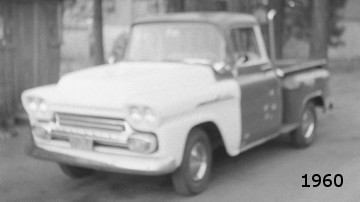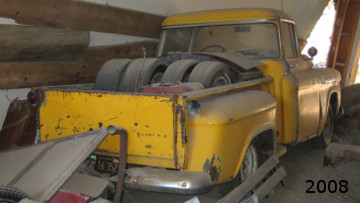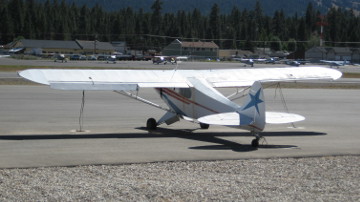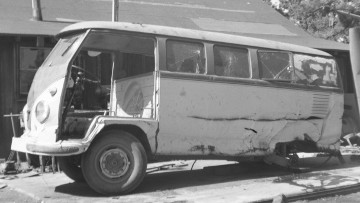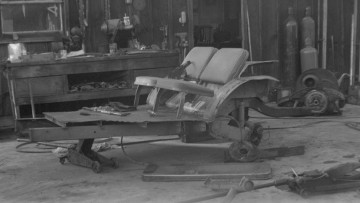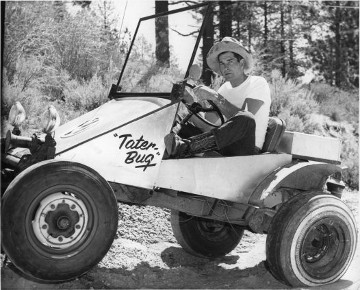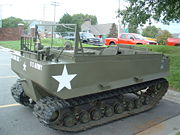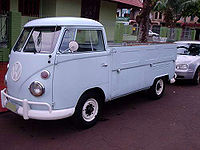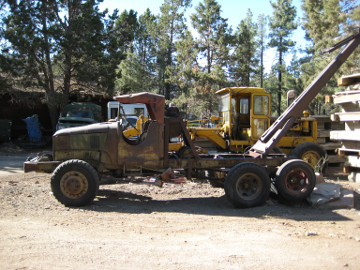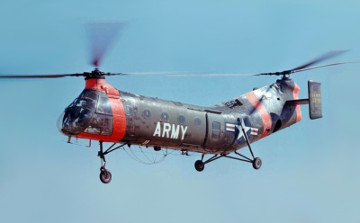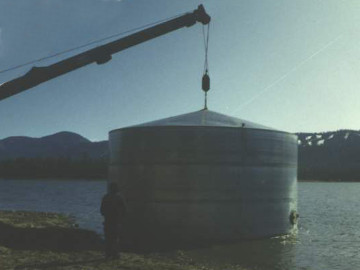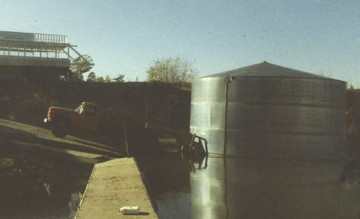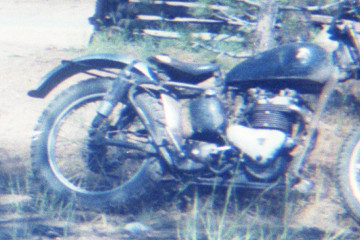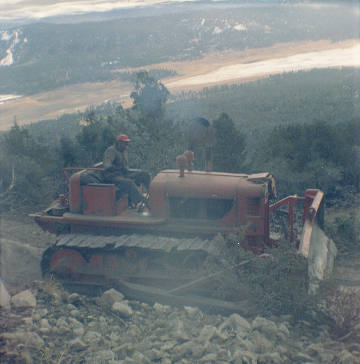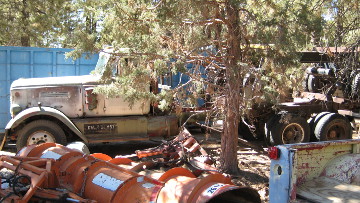The River Trip
Y-AN-ER'S GO-ETTE showed up around 1964.

She was a nondescript white 16-foot flat-bottom ski boat, decked out in metalflake gold trim and that cryptic name emblazoned across the transom. The initial configuration featured a dual-quad 327 Chevy, with finned aluminum Corvette valve covers, a water-cooled V-drive with no reverse, a non-adjustable cavitation plate and white naugahyde tuck-and-roll seats. It had but one purpose: to pull a person clinging to the end of a rope across the water, and it did that very well. Many an unwary skier, accustomed to some little outboard, was yanked clean out of his binding and flipped end over end by that boat.
Y-AN-ER was a great ski boat. It always started. It ran reliably. It had no major mechanical difficulties. As the years went by, newer, better, faster boats came along. Unfortunately, my father had to keep up. By 1974, the 327 had a radical roller cam. It no longer started with a touch of the ignition. You had to grind it over and work the throttle, till the right combination of air and fuel dripped into a few of the cylinders. When it caught, it was usually with that slow-responding hydraulic throttle open. Before you could get your foot off the gas, the engine had spun up to 8,000 RPM.
It was this configuration that formed the nucleus of my father's big summer vacation extravaganza. This was the plan: Eight people in three vehicles, plus a boat, would form a convoy and drive to Lake Mohave. We would park in the marina at Cottonwood Cove, launch the boat and ferry ourselves and a ton of camping gear 5 miles upriver, where we would camp on the Arizona side far from everybody. My father would fly over two days later and land on a section of dirt road up on the bluff. It sounded great on paper -- especially if you were the one flying the plane. The reality was a bit more real.
The trouble started almost immediately. I was driving a 1963 Ford Econoline van that wouldn't go more than ten miles without overheating as we made our way across the desert. I tried driving fast. I tried driving slow. I tried letting it get so hot it blew all the coolant out. The only thing that worked was fighting with it till 2 o'clock in the morning when the temperature in the desert fell. I sent the others on ahead and rolled in alone at sunrise.
It took all day to transport everything to the camp site. Spooked by the prospect of being so far from civilization with the temperamental boat as our only transportation, my brother decided to drive around the lake. Nobody thought that was a good idea because the map showed no roads to our camp. He didn't care. He did it anyway. We all thanked him later.
The next day, the king arrived in his airplane around lunchtime, ready to be towed around the lake. With perfect timing, the boat did one of its 8,000 RPM start-ups and something broke inside the engine. It ran alright, but there was a terrible clattering coming from inside.
We took a vote. We wanted to load half the stuff into the boat and the other half into my brother's truck and go home. The king overruled us. It was his vacation and he was going to ski, dammit. We were going to pull the boat motor apart and fix it. Imagine dumbfounded silence.
Well, why not? We were miles from anything. We had only the tools in my brother's truck. We had no rags, no soap, no shower and no work clothes. The natural thing to do was overhaul the engine of a floating boat in the hot sun. It was so absurd nobody could think up a good argument before the king was off to the airplane so he could fly to Searchlight, Nevada and pick up a top-end gasket set. What could we do? We started pulling the engine apart.
The problem was obvious when the cylinder head came off. About an inch of the top ring land had broken off the piston. The bits were banging around in the cylinder. Amazing. All we had to do was remove the broken pieces and put it back together.
Assembly went well, considering we were lacking a few essential tools. Without a torque wrench, the head bolts had to tightened by guessing. Without feeler gauges, valve adjustment had to be done by the audible tick method with the engine running, which sprayed oil all over everything within 20 feet. Setting the ignition timing was mostly guesswork as well, but we got it back together and ran it for two days straight without the piston losing any more pieces.
I have to admit the skiing was excellent, particularly for my father because he didn't do one other thing. Between being pulled up and down the lake he sat under the awning, daydreaming or demanding to be fed.

When he had had his fill, my brother drove him to the plane and he flew away, while we packed and loaded. It seemed like months later when the rest of us finally made it back home, tired, dirty and much in need of a vacation.
There have been many vacations since, none of them so memorable, because none of them had the unmistakable stamp of my father on them.
|
